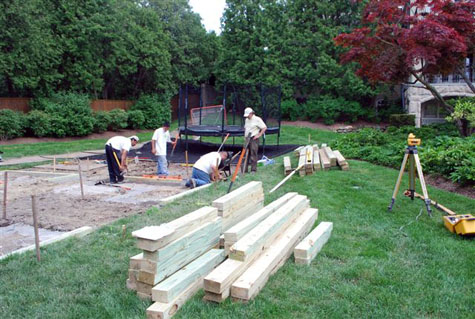

I am late getting to the posting today-but I did manage to get planted all 32 giant pots for the City of Birmingham. Not that my crew isn’t eminently capable of this; I am always the lame one. This year I was determined to get every pot designed, transfer that design to a piece of paper in a readable form, assemble the material, and help load. Diana and her crew take care of the rest-I did not hear from her all day. Except at 4:30-her call that everything was done. She rocks. 
This vegetable garden, with a must complete date of June 6 is coming to a construction close . We have set the 14 foot tall beech arbor, underplanted it with asparagus, (put your imagination to work about how this will look in 3 years) built the vegetable boxes, and planted the columnar apple trees from Henry Luthardt. We installed drain tile, excavated soil and installed a decomposed granite surface to walk on. How I love the sound of gravel underfoot-and this 3/8 inch and down decomposed granite compacts hard enough to take a pair of Jimmie Choo 4 inch heels without the slightest dent. In the center, an herb theatre, with steel arches reminiscent of the Roman aquaducts. Tomorrow we plant the “wild at heart” apple espaliers, install the tomato cage/obelisks, and the tomatoes, plant the vegetables, rhubarb and strawberries. We need to doll up the grade in one spot, and resod. Today, the irrigation is getting installed. Copper, with spray risers. I like the look of overhead irrigation-its beautiful. I hate drip irrigation-it clogs, and malfunctions-you can’t spot any malfunction until things are crisp. And the water is never where you want it, with drip. Drip irrigation is a great idea that the reality is not where it should be. For now, I like water when I can see it. And I like how this garden is at the fun tune-up stage. My most favorite part of a job coming to a close, is washing off the walks, and terraces. Washing off the digging, the sweating, the agonizing over this choice or that. This feeling lasts the better part of 3 seconds, as every gardener knows no garden is ever finished. It is either going backwards or going forwards. No neutral. 
Garden Under Construction
At a Glance- Spring Blue

Blue Pansy

Hydrangea

Pansy
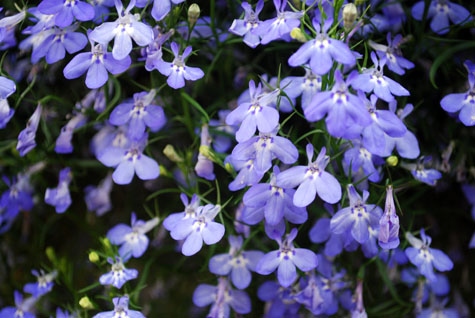
Lobelia

Blue Pansy
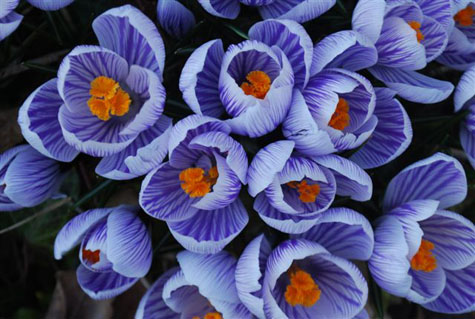
Crocus

Blue Pansy Mix

Blue and Yellow Pansy Mix
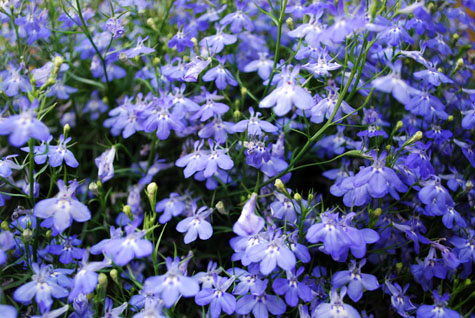
Lobelia
So, Where Are You Going Today?
Buck asks me this every morning. Some days the answer is simple, as in, “I don’t know yet”. It’s usually 5:30 am when I get the question-so not knowing where I will decide to be at 8 is not so hard to believe. But today I am in the thick of a large annual planting we do every year.
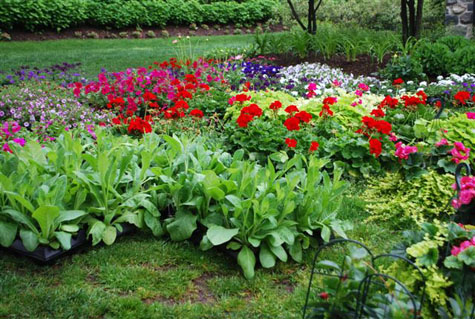 Thank heavens it has a different color scheme and feeling every year. My clients like tinkering with this as much as I do. Its plenty to plan-how many of this, and how many of that. Despite a fleet of trucks, we have plant material delivered. I invariably forget something, or think I have something reserved that’s not there. So we make changes.
Thank heavens it has a different color scheme and feeling every year. My clients like tinkering with this as much as I do. Its plenty to plan-how many of this, and how many of that. Despite a fleet of trucks, we have plant material delivered. I invariably forget something, or think I have something reserved that’s not there. So we make changes.
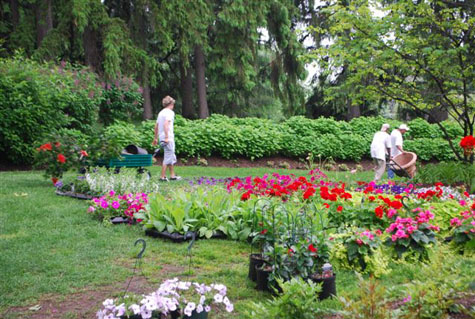 This works for us-photo copies of last years pots and beds have the new scheme written on them. I don’t need to do much for Diana after all her years, except list the plants. Should I leave something out, or have too much, she knows how to adjust.
This works for us-photo copies of last years pots and beds have the new scheme written on them. I don’t need to do much for Diana after all her years, except list the plants. Should I leave something out, or have too much, she knows how to adjust.
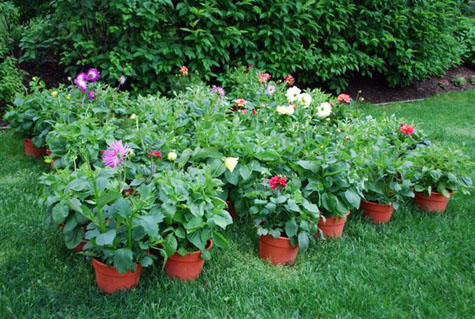 My client’s love of dahlias always presents transport troubles. This year Carlson’s greenhouse grew all the tall dahlias from cuttings. This makes the plant bushy from the start-as opposed to tall dahlias started from tubers. These short and chunky plants are easy to ship, and easier to plant. Let the sun and rain do the job of getting them tall, with those dinnerplate size flowers.
My client’s love of dahlias always presents transport troubles. This year Carlson’s greenhouse grew all the tall dahlias from cuttings. This makes the plant bushy from the start-as opposed to tall dahlias started from tubers. These short and chunky plants are easy to ship, and easier to plant. Let the sun and rain do the job of getting them tall, with those dinnerplate size flowers.
 Giant wirework urns are mossed and planted at the shop; these get delivered, finished, and ready to place. As they are tall, and some are viewed at a distance, I plant simply, and with good contrast.
Giant wirework urns are mossed and planted at the shop; these get delivered, finished, and ready to place. As they are tall, and some are viewed at a distance, I plant simply, and with good contrast.
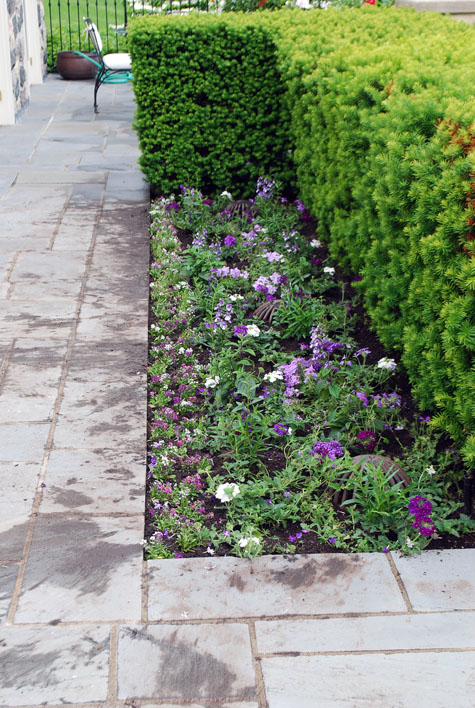 We plant beds backed up by mature and formal yew hedges with a low mix of annuals. The yews are not a backdrop; they are the feature. The little babble of trailing verbena and alyssum, heliotrope and angelonia is in stark contrast to those massive dark green yews.
We plant beds backed up by mature and formal yew hedges with a low mix of annuals. The yews are not a backdrop; they are the feature. The little babble of trailing verbena and alyssum, heliotrope and angelonia is in stark contrast to those massive dark green yews.
 We plant mandevillea vines, tropical hibiscus trees on standard, zinnias, New Guinea impatiens, and the dahlias-all in response to my client’s love of big flowers.
We plant mandevillea vines, tropical hibiscus trees on standard, zinnias, New Guinea impatiens, and the dahlias-all in response to my client’s love of big flowers.
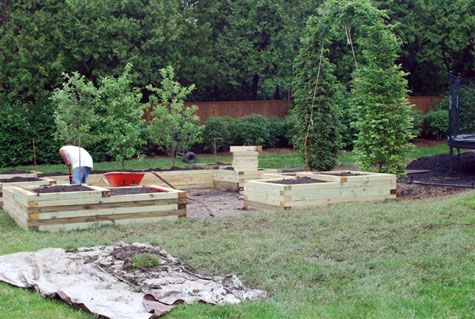 For years we have planted the vegetable garden in giant fiber pots. This year we have a formal vegetable garden under construction-the highlight of which is a European beech arbor 14 feet tall.
For years we have planted the vegetable garden in giant fiber pots. This year we have a formal vegetable garden under construction-the highlight of which is a European beech arbor 14 feet tall.
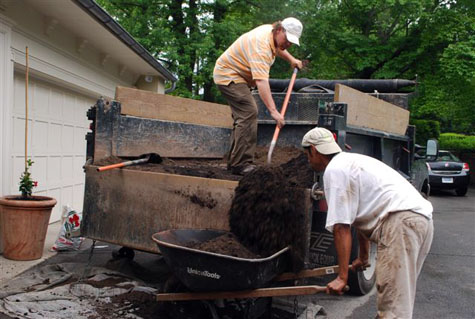
We are in the thick of it.
The Window Box: A Hybrid Vehicle
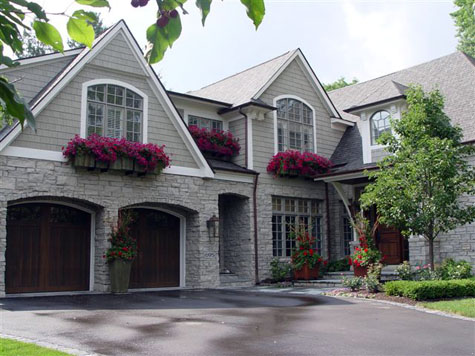
Window boxes have large areas for planting, which can give the impression of annuals in the ground-minus the turning of the dirt, the stooping and the stooping again to weed. They also put the action at eye level. Window boxes on a second story is a striking surprise. Sizing a window box appropriately is the toughest part. Plan carefully, so your boxes thrive.

I like window boxes to be sized generously in width. Sizing the box wider than the window puts the visual weight at the bottom, where it should be. A box narrower than the window makes the window look top heavy and oppressive-windows are large dark shapes during the day. �
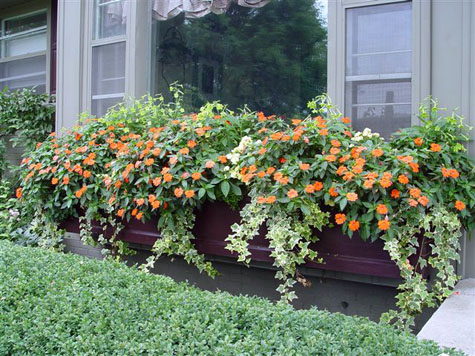
Window boxes are not just for French and English cottage style homes. A sleek contemporary box can compliment the architecture of a modern home. They provide great mass and substance in the horizontal plane. They have the added attraction of views from inside, as well as the outside.
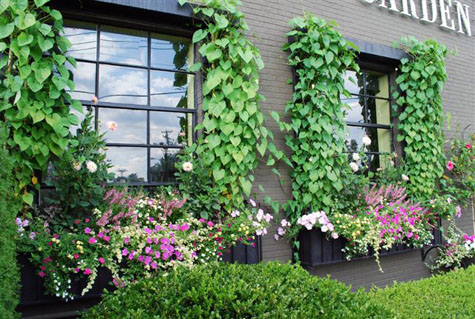
A very wide box invites planting tall annuals, even vines, which serve to frame the window. The large planting space allows you to showcase the relationship between a number of different plants. Boxes have the heart of a whole garden, in a smaller space.
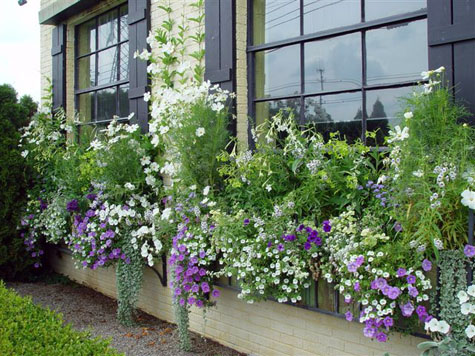
Many ready made window boxes are sized more to be convenient to load into your car, than convenient for good plant growth. Undersized boxes are the devil to keep watered, once the plants have rooted in well. These boxes are 11″ wide and 16″ tall-plenty of room for a soil mass that will retain moisture evenly, and allow for root growth. A window box that is 8″ tall and 10″ long will need succulents, as they do not root deeply, and they are happy in dry soil.

Window boxes have no need to be fancy, especially if your idea of a good one is profuse and spilling over with flowers. Luxuriant-I like the word, and the look. These boxes are made from a simple iron grillwork, and lined with galvanized sheet metal liners. Wood boxes will last much longer, if they have sheet metal liners. Wood that is constantly wet deteriorates quickly.�
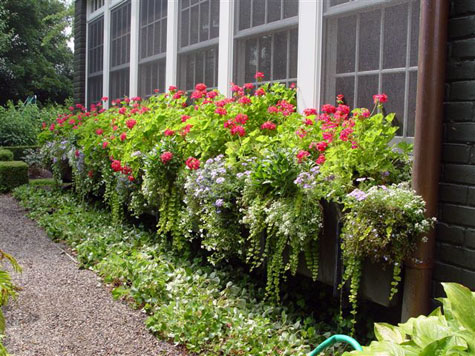
Wet soil is incredibly heavy; be sure the boxes are securely fastened to the wall. The weight issue is somewhat mitigated by the drainage material; I routinely fill the box at least half full with drainage material; bagged bark works well.
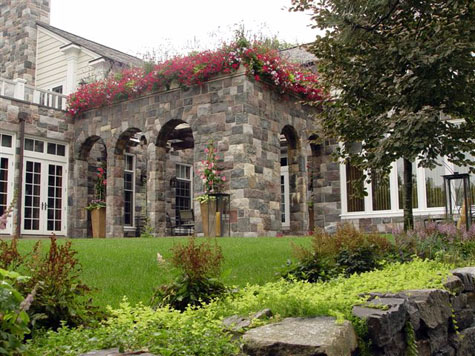
Not all boxes need to be attached to a wall. Boxes can be integrated into a pergola roof, or placed on top of a wall to good effect. Clear irrigation tubes can be run to them. This makes watering simple, as long as you experiment until you know how much time it will take to soak them. A plain sheet metal box will need reinforcement on the interior to prevent the metal walls from bowing out. I sometimes screw treated lumber to the inside to maintain a cleanly rectangular shape.
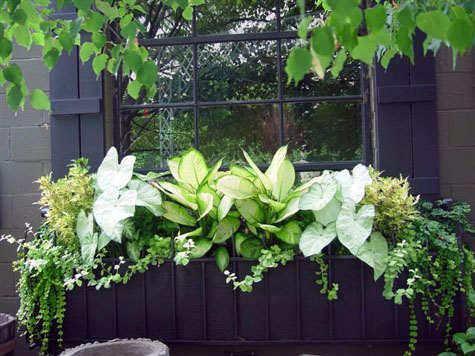
Window boxes are not just for sunny locations. The caladiums, dieffenbachia, and yellow coleus in this box light up a very shady spot. The trailing licorice is surprisingly tolerant of shade.�
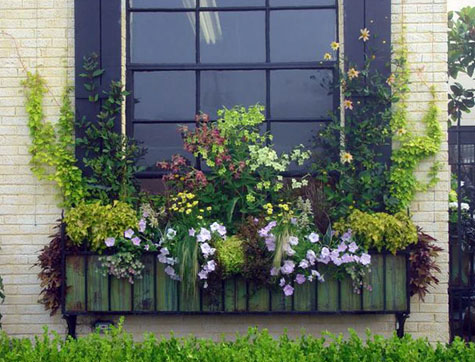
A great window box is rhythmic. Decide if you want the height in the middle, or at the ends. A uniform height is a more contemporary look. The colors of nicotiana-terra cotta, and 2 shades of lime, set the stage for this box. All the supporting cast plants repeat color, or contrast in texture. A lime green variety of hops is growing on wires outside the shutters. Wispy small growing grasses are great in boxes, as they are neither upright nor trailing. If you are after a tall middle, plant the center first, then work to the edges. If you are fond of symmetry, reverse the order of right half on the left.

This box, tucked neatly between dark stained shutters, makes the flowers, and shutters the center of attention. This arrangement of a formal box and equally formal shutters, and green and white planting is elegant, but lively. �
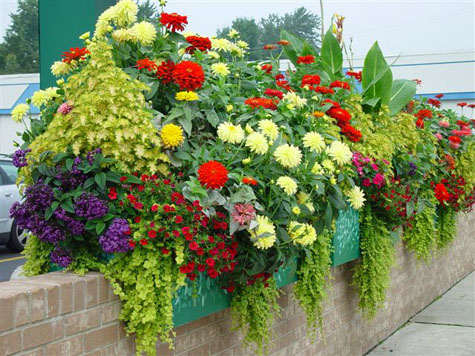
These boxes, specially constructed to sit astride a narrow brick wall, say welcome in a very big way. What a happy improvement over the wall.